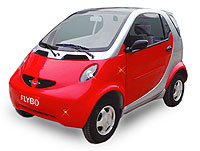These days, motor vehicle manufacturers have gone an extra mile to protect the driver against other road users and himself as well. As things look, sooner than later, we might be faced with cars that drive themselves along our roads.


These days, motor vehicle manufacturers have gone an extra mile to protect the driver against other road users and himself as well. As things look, sooner than later, we might be faced with cars that drive themselves along our roads.
These cars could usher in a new era where road accidents may be greatly reduced if not eliminated at all. Some countries like Germany have since developed "intelligent roads”; these are lined with gadgets that work hand in hand with the GPS (global positioning system) navigation systems onboard the vehicles that ply them. In an increasing number of lavish vehicles, a combination of jingles, beeps, rumbles and blinking lights, coordinated and fired by state-of-the-art electronics and safety devices can help you manoeuvre more easily and even avoid accidents.
According to Don Grimm, a senior researcher for General Motors, (a leader in this field), "It’ll create some real cost advantages and could proliferate down to midsize and economy vehicles.”
The principle of these devices made of tiny cameras and extremely accurate sensors, quick-acting actuators, blanketing radars and powerful computer chips, is to advance the industry into a new era of driver safety.
Motor vehicle makers are already able to shape folding metal and integrating airbags and other electronic safety devices into the crash-survivable shells that the automobile safety regulation requires.
According to Daniel Johnson, a marketing official at VOLVO, "This is a revolution in how we’re doing safety, until lately; there really haven’t been a lot of technologies that could handle the whole area of preventative safety.” The new phase is making vehicles that help you avoid accidents in the first place, added Daniel Johnson.
These days, most luxury motor vehicle manufacturers are offering one or more advanced-warning system somewhere in its line-up, and the aftermarket is getting in on the act as well.
Some of which are:- Blind Spot Information System, has been fitted on the Volvo S80, V50, C70, V70, XC70 and XC90, this device uses an outside camera to detect when a moving vehicle is in your blind spot and activates an amber light on the left front window pillar to let you know.
It’s a handy innovation that serves as a great backup check if your mirror and over-the-shoulder glimpses don’t detect a vehicle.
Distronic Plus system, is on the Mercedes-Benz: This collision-prevention system is featured on S-Class sedans and CL-Class coupes and uses both short-range and long-range radar systems to distance you from moving vehicles ahead. It chimes if you’re closing in too fast and preps the car for a possible collision by tensing the seatbelts and cueing up the airbags.
Distronic Plus will brake the car up to 40 percent by itself if you don’t respond; but once you start braking on your own to avoid a collision, the car will give you all the braking force it has. On the other hand, the Lane departure prevention, Infiniti: Available as an option in the technology package on most models.
Infiniti offers a system that actually goes lane-departure warning one better: It physically prevents the vehicle from drifting if the driver doesn’t intend it to.
If a turn signal isn’t engaged and a camera detects that the car is passing over a lane line, the system "selectively applies the brakes to the opposite side of the vehicle, which gently brings the car back in line.
motoringcorner@live.co.uk


